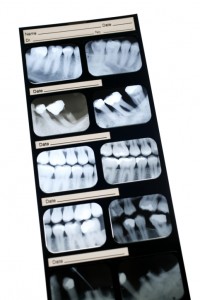
Nearly 40 percent of Americans 30 years or older suffer from gum disease. Don’t be a statistic! Call your Catonsville Dental Care Dentist.
In 2010, the Centers for Disease Control and Prevention (CDC) estimated that nearly 64.7 million Americans over the age of 30 have periodontitis, the more advanced form of periodontal disease. That is nearly 40 percent of the population that currently has some type of gum disease. But do you know what periodontal (gum) disease is or how it is treated? Let’s go over this serious disease.
What is Gum Disease?
Gum disease can range from a simple gum inflammation to a serious disease which results in major damage to tissue, bone, and even organs. Gum disease usually starts in the areas commonly missed when brushing your teeth.
Symptoms of Gum Disease
When spots in your mouth are ignored and the plaque isn’t cleared away, a level of film builds up on your teeth and gums causing inflammation. This swelling is otherwise known as gingivitis and is one of the warning signs of gum disease. Other signs of gum disease are redness, bleeding when brushing your teeth or flossing, receding gum line, loose teeth, constant bad breath, pain when chewing foods, sensitivity, and mouth sores. If inflammation caused by gum disease is left untreated, it can cause gums and supporting bone structure to deteriorate. This will lead to gum recession and tooth loss. It can also lead to other diseases like diabetes and heart disease.
Prevention
The best way to prevent gum disease is to add more habits to your daily routine. Brush your teeth after meals to help remove food and plaque that are trapped between your teeth and gums. Also brushing your tongue can help remove hidden bacteria. Flossing at least once a day can help remove food particles and plaque that your brush can’t reach. Using mouthwash can also remove hidden bacteria and floss.
Treatments
If you have been diagnosed with gum disease, don’t give up. There are a few treatment options that could cure you. One non-surgical option is to have your teeth professionally cleaned. This cleaning will remove the plaque and hardened plaque that builds up called tartar. These things will be removed from above and below the gum line. If you have signs of gum disease, you may need to have your teeth cleaned more than twice a year. Scaling and root planing is another non-surgical option but does involve a local anesthetic. Plaque and tarter are removed from the gums by being scraped away and rough spots on the teeth root are made smooth through planing. Smoothing the rough spots helps to remove the bacteria and provide a clean surface for the gums to reattach to the teeth. There are several different surgical options to help with gum disease include flap surgery, bone grafts, soft tissue grafts, guided tissue regeneration, and bone surgery. Most surgeries are needed when the tissue around the teeth is unhealthy and cannot be repaired with nonsurgical options. Talk with your dentist or periodontist about your treatment options.
One of the most important things you can do for your teeth is to know your risk. Age, smoking, diet, and genetics increase your risk for gum disease. If you are at risk for gum disease, talk to your Catonsville Dental Care dentist today!
Catonsville Dental Care
Regularly seeing your Catonsville Dental Care dentist will help to determine if you are in need of a fluoride treatment. For more information on fluoride treatments as well as other preventative dental care services, call Catonsville Dental Care today! Call today at 410-747-1115, or submit any questions by visiting CatonsvilleDentalCare.com.
